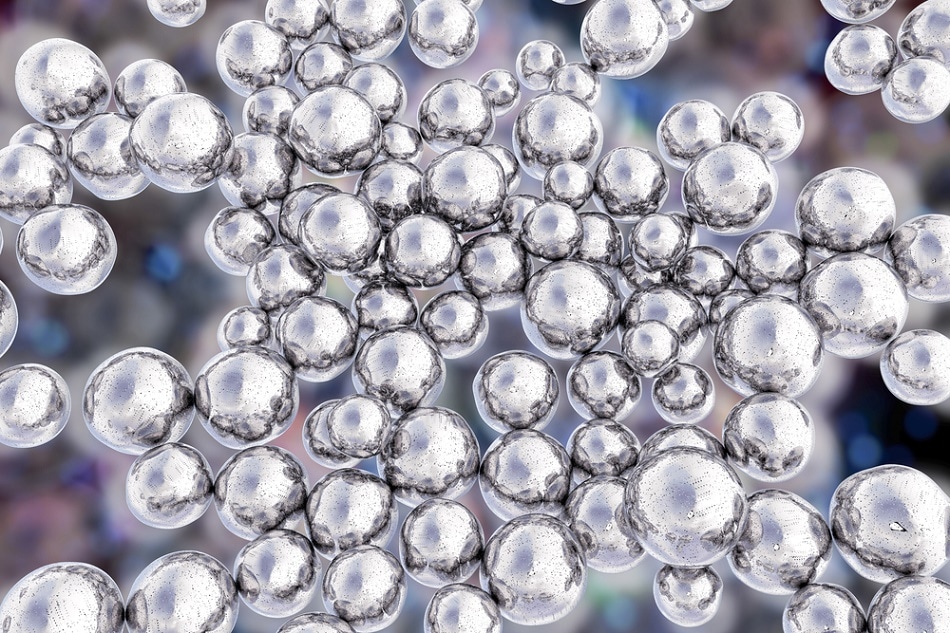 Kateryna Kon/Shutterstock.com
Kateryna Kon/Shutterstock.com
Nanoclusters is a term used to describe a group of near-monodispersed nanoparticles that measure less than 10 nm in diameter1. These nanostructures exhibit unique chemical, electronic, optical and structural properties, all of which are much different as compared to their bulk counterparts2.
It is due to these special properties that nanocrystals have many fascinating potential uses, such as applications in quantum dots, chemical sensors, light emitting diodes, electric batteries, and etc1,3.
Electric batteries are devices consisting of one or more electrochemical cells that generate electrical energy from the chemical reactions of the electrolytes in order to power electronic devices such as smartphones and electric cars.
Filled with electrolytes containing anions (negative ions) and cations (positive ions), each cell has two half-cells; one with a negative electrode, termed the cathode, and the other with a positive electrode, or anode. Cations are reduced, meaning electrons are added, while anions are oxidized, or electrons are removed, at the anode during charging.
During discharge, this process is reversed2. Primary batteries, such as alkaline batteries, are unable to recharge because of the irreversibility of the chemical reaction that occurs during the discharge of electricity. In the case of secondary batteries, such as lithium-ion batteries, this reversal is possible because of the chemical composition, making these batteries capable of being recharged.
Cells within the batteries can vary from wet cells, where the electrolyte is in a liquid state, dry cells, where the electrolyte is in a paste form, and molten cells, which use molten salt as the electrolyte. Standard lithium ion batteries, for example, have a liquid electrolyte, where the flow of lithium ions produces electricity.
Due to this liquid electrolyte, several disadvantages are associated with the use of lithium batteries, of which include increased volume requirement, degradation as the battery cycles, leaks, and high flammability1. While batteries with solid electrolytes are considered to be more stable, the ions move through them slowly, making them less efficient for battery applications as compared to wet cells1.
Researchers at the University of Illinois, Department of Chemistry have prepared nanoclusters of copper selenide (Cu2Se) to be used as electrolytes in an effort to combine the best advantages associated with both solid and liquid electrolytes.
At low temperatures, these Cu+ ions are localized at the lowest energy interstitial sites within a low symmetry pseudo-cubic Se-2 sublattice. However, at high temperatures above 400 K, the Cu+ ions form a disordered, liquid-like sublattice, which allows the Cu+ ions to move freely between the vacant and occupied sites within the immobile face-centered Se-2 ions3.
At these high temperatures, the Cu+ ions have the diffusivity and resulting ion conductivity measured to be of three orders of magnitude higher than what it would have been at room temperature3. Despite its superionic behavior, this high-temperature requirement could limit its use in batteries.
Dr. Prashant Jain’s research team has recently discovered that due to the absence of a compressive strain of these molecules, ultra-small Cu2Se nanocrystals display a liquid-like Cu+ sublattice at ambient room temperature and a pressure unlike that of a bulk material of the same compound.
The super-ionic transport of the Cu2Se semiconductor is attributed to the large number of vacant crystallographic sites available for Cu+ ions in its unique structure, which is comprised of 8 or fewer copper Cu+ ions within a rigid cage formed by the significantly larger Se-2 anions3.
Solution phase cation exchange was used to prepare Cu2Se from monodisperse, zinc blende-like clusters of 2 nm sized CdSe clusters. HAADF-STEM tomography images confirmed that the average diameter of Cu2Se nanocrystals prepared was 2.1 nm. The nanocrystals were also found to show tunable localized surface plasmon resonance (LSPR).
High-resolution transmission electron microscopy (HRTEM) revealed that superstructural vacancy is completely absent in 2 nm Cu2Se nanocrystals (0 %), which is unlike that of the larger 4 nm nanocrystals (10 %) and the 6 nm nanocrystals (80 %). Furthermore, powder X-ray diffraction (PXRD) studies showed an increased replacement of Cu+ occupancy from the trigonal position to the tetrahedral position in low-temperature Cu2Se as the Cu2Se nanocrystal’s size decreases from 6 nm through 2 nm.
Dr. Prashant’s team is hopeful that the superionic nature and the actively tunable plasmonic properties of Cu2Se nanocrystals make them an ideal candidate material for ultrafast electro-optic switching. The team is now attempting to incorporate the nanoclusters into a battery, and compare its performance with currently available commercial batteries with solid-state and liquid state electrolytes.
References:
- Aiken, John D., and Richard G. Finke. "A Review of Modern Transition-metal Nanoclusters: Their Synthesis, Characterization, and Applications in Catalysis." Journal of Molecular Catalysis A: Chemical 145.1-2 (1999): 1-44. Web.
- Ahlberg Touchstone, Liz. "Tiny Nanoclusters Could Solve Big Problems for Lithium-ion Batteries." Phys.org. 21 Feb. 2017. Web. https://phys.org/news/2017-02-tiny-nanoclusters-big-problems-lithium-ion.html.
- White, Sarah L., Progna Banerjee, and Prashant K. Jain. "Liquid-like Cationic Sub-lattice in Copper Selenide Clusters." Nature Communications 8 (2017). Web.
Disclaimer: The views expressed here are those of the author expressed in their private capacity and do not necessarily represent the views of AZoM.com Limited T/A AZoNetwork the owner and operator of this website. This disclaimer forms part of the Terms and conditions of use of this website.